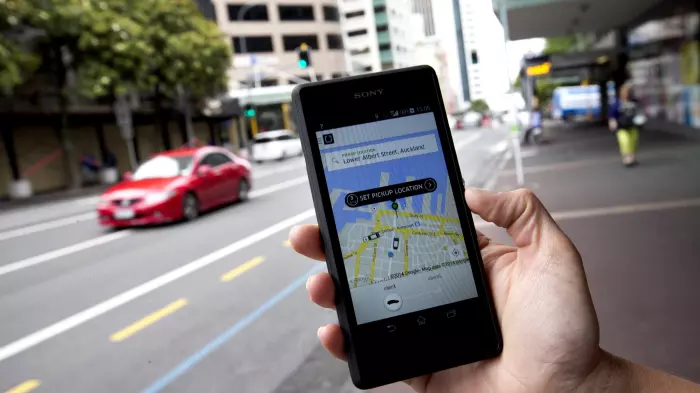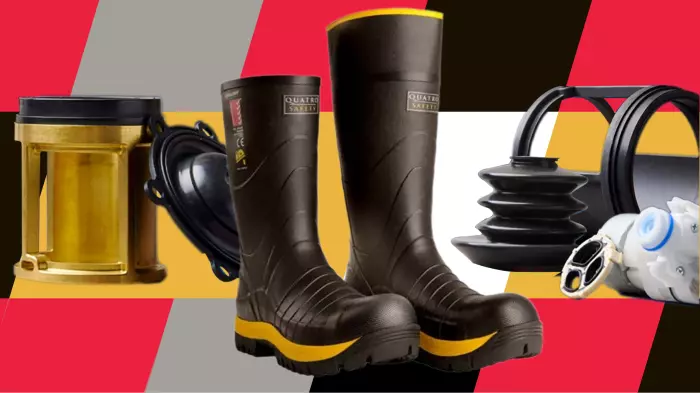BusinessDesk investments editor Frances Cook responds to emails from readers each week to answer questions about money. Below, you'll find her expert advice. Send your own questions to [email protected].
1: Hi Frances,
I hope you are well. I love the information you provide on Instagram. I was wondering how things work in terms of tax when doing a side hustle, for example, if you’re doing surveys or anything on an on-and-off basis? Is there someone/somewhere we can go to get this information?
Thanks,
H
2: Hi Frances,
Just wondering, can you cover the tax implications for side hustles if you already earn $100,000?
Thanks,
L
Hi H and L,
Two letters on the same topic! That’s definitely a prod for me to shoot this subject to the top of the queue.
First of all, let me say that tax can be complicated. So, if you’re feeling out of your depth, that’s pretty normal.
If you’re still feeling fuzzy after this column, consider talking to an accountant. A good accountant should save you more in taxes than they cost you in fees. The trick, as always, is finding a good one.
Anyway, on to the answer.
The first thing to know is that we don’t have secondary tax in the way that most people assume. Yes, you will need to put money aside for taxes, and you will file it under “secondary tax”.
But you don’t pay more tax just because it’s a second source of income. You pay more as you earn more, but you don’t get pinged just because you’ve got income from more than one source. The tax rates simply continue at the same rate as regular income tax.
You used to have to pay a higher tax rate on secondary sources of income, but they changed that in 2019. Good job.
IRD
The Inland Revenue Department (IRD) now considers your total income, and taxes you for the rate that you’re earning once all of your earnings are pooled together.
These tax rules apply whether you’re freelance, a gig worker, a side hustler, self-employed or a contractor. The tax department lumps you all together.
If you want to check out how much the tax rates actually are, check out this handy tool from the IRD, called “work out my tax code”.
Generally speaking, plan to put aside about a third of anything you earn. Do yourself a favour and do it as you go. Consider setting up an online-only, no-fee bank account, call it “tax” and park one-third of everything you earn in there. Then don’t touch it.
Don’t tell yourself you can spend it now and earn it back later, or that the tax department won’t notice you didn't file, or whatever other excuses we tell ourselves to spend money we know we shouldn’t. If you need to, stash it with an entirely different bank so that you don’t see it when you log into your regular banking and feel tempted.
If you’re earning more than $100,000, the same advice applies, unless you manage to hit more than $180,000 in total income for both your first and second job(s).
If you’re earning more than $80,000 a year on the side, then well done! You will have qualified for the top tax rate by then, which is 39%. So, stash away a little more than the third of the earnings that I mentioned previously.
This would also mean you need to register for GST. If you earn more than $60,000 on a side hustle, freelance or gig work, you have to register and pay for GST. It does also mean you can claim credit for GST on most of your business expenses.
How to pay
As to how you should pay? You have plenty of options.
The IRD makes it pretty easy through its online portal, MyIR. You can tell it how much you’ve earned and pay through online banking. Any questions about how it all works, you can get in touch with its team through the MyIR email system.
MyIR works pretty well if you have a straightforward secondary income and don’t want to claim any expenses back. However, if you have any unusual circumstances or you’re trying to claim back expenses, it gets a little less user-friendly.
In that situation, consider an accountant. As I said earlier, a good accountant should save more than they cost. When you’re working from home, or doing contract work, or anything that counts as being self-employed, there’s an amazing amount that you can claim back.
Petrol, electronics like a laptop, toilet paper, your broadband bill, and even the interest on your mortgage could all be up for a tax refund when you hit the self-employed world. These things really add up and are worth claiming back.
Hnry
If you’re comfortable working online, there’s also Hnry as a low-cost way to file taxes, claim back costs and stay on top of things. It lets you send invoices, file ACC and will automatically deduct tax from payments made to you, so that, you know, you don’t get tempted by the money sitting in your tax savings account.
Speaking of Hnry, I asked its chief executive, James Fuller, to give us his two cents on your questions. Here’s what he had to say:
“We often get questions about 'secondary tax' as it can be a point of real confusion for people.
“There is no such thing as 'secondary tax' for self-employed income. The best way to think about it is that IRD will tax your self-employed income at a blended rate based on the sum of all of your income, including salary/PAYE work.
“For instance, if you have a $40,000 annual salary job, you'll pay a tax rate of around 15% via your employer. If you earn an additional $5,000 from self-employed income on top of that, for a total annual income of $45,000, you'll need to pay 17.5% income tax on this additional $5k of income.
“This 17.5% blended tax rate not only covers the income tax owing for that self-employed income but also covers the shortfall in the income tax paid via your employer. Remember, your employer taxed you assuming your total annual income was $40,000 when in fact it was $45,000!
“This is a fairly simple example whereby all of your income stays within the same income tax band. As another example, if you had a job with a $48,000 annual salary (right at the top of a tax band), you'll pay roughly 15.5% income tax on that via your employer.
“If you earned an additional $20,000 in self-employed income for a total of $68,000 annual income, you'd cross a tax banding. This would mean you'd need to pay 30% in income tax on that $20,000 of self-employed income, as you'll have crossed into the $48,000-$70,000 bracket for that amount, which attracts the 30% tax rate.
“Many people get caught out in thinking that their self-employed income will be taxed differently and won't be combined with their salary/PAYE earnings, when in fact IRD sets the blended tax rates based on the sum of all your income.
“It's worth noting, though, that the majority of individuals earning self-employed income will be entitled to claim business expenses based on the purchases they make or the costs they incur in the pursuit of earning that self-employed income.
“It's really important that people know the sorts of things they might be able to claim – running costs, home office costs, fuel expenses to name just a few – all of which will reduce the amount of their self-employed income they are required to pay tax on.
“In the example above, if you earned $20,000 in self-employed income, but incurred costs of $5,000 in doing so, your total net income after expenses would be $63,000. Whilst you'd still need to pay income tax on that additional self-employed income, claiming those business expenses would save you roughly $1,500 off your annual tax bill!”
'No exemption'
Tax specialist and consultant Terry Baucher also has some helpful tips for us:
“The basic, if very boring, starting point is that all income is taxable. There is no exemption for small amounts. The income is taxable whether your other income is $10,000 or $100,000, only the tax rate that is applicable will differ. Here’s a pretty useful link to this key point.
“If you already have a job and you’re taking on extra work, doing phone surveys for example, then this extra income will be subject to 'secondary tax'.
“The PAYE system is designed around a person having one job and, in that instance, it works very well – each payday the correct amount of tax is deducted and paid to Inland Revenue. But when a person works two or more jobs, then the tax rate applied to a second job has to be adjusted to take into account the earnings from the person’s main job, hence “secondary tax”.
“If this isn’t done, then a person might not pay enough tax during the year and then be faced with a large tax bill after the end of the tax year.
“You provide your secondary employer with a tax code, which has a specified tax rate that takes into account your income from your main job. For example, if your annual income from your main job is $40,000 then the secondary tax code would be “S” or 17.5%. In the case of the correspondent earning $100,000, it would be ST or 33%. You can work out your code here.
“In some cases, the extra income might mean a person crosses a tax threshold – they earn $40,000 annually from their main job but their additional income will take them across the $48,000 threshold above which the tax rate rises to 30%, which would be the “SH” tax code. Now 30% on all the secondary income would mean the person would pay too much secondary tax.
“Although this person will get a refund after the end of the tax year, a better alternative might be to request a 'tailored' tax code from Inland Revenue.
“If the side hustle involves selling goods or maybe providing services individually rather than through an agency, then you will need to tell Inland Revenue you need to file a tax return to include the income. Only in this case can you claim expenses. This requires keeping good records – a separate business-only bank account is very helpful here.
“Keeping receipts is essential. You would be surprised at the number of times a receipt from petrol station contains non-deductible expenses such as coffees and pies! Always remember to put at least 25% aside for tax. Doing your own accounting and tax returns requires discipline but, like all good habits, it gets easier with practice.
“However, if you are an employee then you cannot claim expenses, even if you can say you’ve incurred work-related expenses such as using your phone for business calls. Employers are meant to reimburse employees for such costs.”
It can feel like a bit of a minefield sorting out tax at first. The good thing is that once you wrap your head around it, you can set up systems that are more "set and forget" for the following years.
A professional can really help, both in terms of saving you money and time. There are lower-cost options available that can save you a lot down the road.
Send questions to [email protected] if you want to be featured in the column. Emails should be about 200 words, and we won't publish your name. Unfortunately, Frances is not able to respond to every email received, or offer individual financial advice.
Information in this column is general in nature and should not be taken as individual financial advice. Frances Cook and BusinessDesk are not responsible for any loss a reader may suffer.














